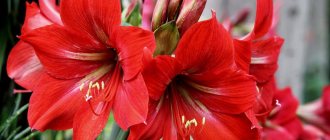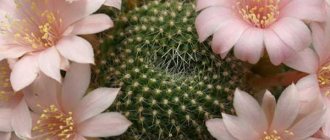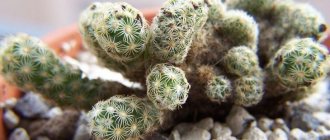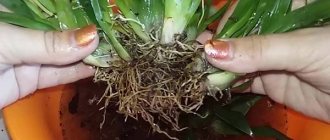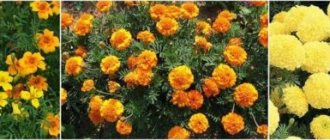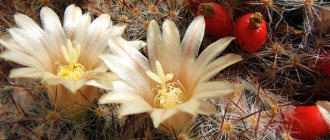Periwinkle: description
Periwinkle can be grown as a creeping or herbaceous plant with erect, rough stems. The leaves, located opposite each other, are represented by leathery, rough, dark green plates of small size with a pointed tip and whitish edges. Large bright flowers appear from the axils in spring.
Single buds have a variety of colors: from pink and purple to snow-white and cream. The corolla is twisted in the shape of a funnel, and an elongated elliptical tube grows on it. Periwinkle is characterized by tall elastic peduncles, some of which can persist throughout the active growing season. The fruit of the plant is represented by two leaflets that open in the middle and produce small brownish seeds.
general information
Periwinkle is a ground cover plant and can be creeping or climbing. It has shiny, leathery leaves, from the axils of which appear simple but very delicate flowers of five petals.
Periwinkle has thin but numerous shoots that spread in all directions. They take root themselves, because each node can send out its own roots. Periwinkle blooms in the spring, but individual flowers can be seen until autumn. And there are evergreen varieties that are not afraid of either snow or heat.
Periwinkles are grown in any way you like: in flower beds, instead of decorative dividers, and even instead of a mulch layer around trees. They are ideal for alpine slides, but will grow even in hanging flowerpots. This is also a surefire way to get rid of other more dangerous weeds in the garden.
Periwinkle small, pink and other species, photo
Periwinkle has a large number of different species and varieties, each of which has its own characteristics.
| View | Description | Varieties | Peculiarities |
| Straight | Numerous shoots reach 20-80 cm in height. The leaves are opposite, ovate, 3-6 cm in length, have a mosaic color with beige edges and strongly protruding veins. The rhizomes are covered with small scales and are woody. Flowers 3-5 cm, blue, pink with a white tint. The fruit is about 5 cm. | Albo Plena, Purpurea, Sterling Silver, Ralph Shugert. | Rhizomes are widely used in pharmaceuticals and folk medicine. Found on rocky and gravelly slopes of the Tien Shan. Most often propagated vegetatively, seeds are rarely used. |
| Small | Perennial branched shrub up to 60 cm long. The leaves have a glossy shine, round, slightly elongated, about 0.5 cm, covered with vegetable wax. The peduncles reach 15-20 cm, and one dense bud of blue or bluish color grows on them. | Illumination, Moonlit, Ralph Shugert, Valley Glow, Alba Variegata, Golden, Argenteovariegata, Variegata, Azurea Flore Pleno, Double Purple, Atropurpurea, Gertrude Jekyll. | Shade-loving, its natural habitat is forests and rocky slopes. Distributed in Asia Minor and the Mediterranean. Fruits are formed very rarely, propagated by branching rhizomes. Frost-resistant. |
| pubescent | A compact plant with a well-developed root system and fairly strong thin stems. The leaf blades are smooth, dark green, ellipse-shaped, pointed. The flowers are medium-sized, different colors: there are purple or bluish petals with white. | Bowles, La Grave, Dart's Blue, Sabinka, Marie | It is found in the forests of the Caucasus between placers and on mountain slopes. Unpretentious, characterized by good adaptation and rooting. |
| Grassy | Its liana-like stem occupies large areas and is of medium size. The leaves are elongated, narrow and rough, the edges are covered with villi, pointed, rich green. The buds are located on small stalks, the petals are gracefully curved, most often white. | Alba, Emily Joy, Gertrude Jekyll, Albo Plena, Illumination. | Distributed from the slopes of Greece to the Caucasus Range. In winter, its stems die off to the very base, and in the spring they grow back even more than before. Due to its branching, it is often grown as an ampel species in separate containers. |
| Pink | An erect branching shrub about 60 cm tall. The leaves are dark green, oval, leathery. The flowers grow in large numbers, are medium in size, the color is often pink-red or purple, and there are also plain white varieties. | Grape Cooler, Peppermint cooler, First Kiss. | Found in Madagascar, India and China. It has another name - catharanthus. Used in folk medicine to treat tumors. |
Growing from seeds
This is a rather labor-intensive and complex process. Although the seeds are quite unpretentious, it is necessary to constantly monitor the air temperature, soil moisture and ventilate the containers daily.
With proper care, the first young shoots of periwinkle will not take long to appear. Seeds can be purchased at the store or collected by hand from mature plants.
However, they extremely rarely bear fruit in a garden or home. There are 2 ways to plant seeds: seedlings and open ground.
After flowering
After flowering, the periwinkle clearing does not lose its decorative effect, decorating the ground with a lush carpet.
The only thing that is required from the owner is to trim the protruding branches to give the planting a neat appearance . By the way, cut branches can be used as cuttings.
How and when to collect periwinkle seeds
Vinca flowering ends with the formation of seed pods. This usually happens in September. Considering that it blooms profusely and grows low, collecting seeds is long and difficult .
If you nevertheless decide to acquire seeds, carefully remove the boxes from the shoots, remove the seeds from them, dry them and put them in a fabric bag. Store in a cool and dry place .
Planting periwinkle seedlings in open ground
Sowing of seedlings is carried out at the end of February or mid-March.
- Before planting, you need to soak the seeds in a solution of potassium permanganate to get rid of pathogenic bacteria and fungi.
- Make drainage holes in the container, add soil mixed with peat tablets.
- Leave the distance between shallow rows 3-5 cm.
- Seeding is done with a pinch.
- Sprinkle the seeds on top with the substrate, compact and moisten it.
- Place containers with periwinkle in black tight bags and put them in a warm place for 5-7 days.
- Maintain the air temperature not lower than +23…+25 °C. Moisten the soil regularly.
- Sprouts will appear in 1 week, then the seedlings must be removed from the bags and placed in a well-lit place.
- It is advisable to reduce the temperature to +17…+20 °C.
Young periwinkle needs special care:
- Water regularly, but not often. Make sure that the soil does not dry out.
- 3 weeks after the first shoots, you need to fertilize with nitrogen-containing or phosphate fertilizers.
- Before planting in open ground, feed the periwinkle once every 2 weeks.
- After 4-5 healthy leaves appear on the sprouts, you need to make a dive: 2-4 roots in one container.
White dogwood care
Despite the fact that white dogwood is distinguished by its unpretentiousness, it still needs to be well looked after. It should be cared for in almost the same way as other garden crops.
Watering
Particular attention should be paid to watering young, immature bushes. They are watered regularly 1 or 2 times every 7 days.
Older shrubs need watering only during periods of prolonged drought. So, in the summer during a drought, it will be enough to pour one and a half to two buckets of water under each bush 2 or 3 times a month. When the bush is watered, loosen the surface of the soil in the circle around the trunk and pull out all the weeds.
Fertilizer
White turf does not need fertilizing, especially if the soil on the site is saturated with nutrients. However, if you want the bush to be powerful and bloom profusely, then in the spring you should add from 100 to 150 grams of the mineral complex to the soil around the trunk, and in the summer - from 5 to 7 kilograms of humus or compost.
Trimming
After the bush is 3 years old, systematic formative pruning begins. If this rule is neglected, then the white tree will soon begin to gradually expose the lower part of the bush. To ensure that the shrub is always compact and attractive, every third or fourth stem should be completely cut off. All weakened, injured and diseased branches are also cut out, leaving only the strongest and most developed. If white turf is used to create a hedge, then its first cutting should be done in July, and again in August (when the stems grow back).
If you grow varieties whose bark is brightly colored, then they are trimmed only once over several years, and this procedure is carried out in early spring, before the buds open. In this case, the bush should be shortened to 20 centimeters from the soil surface, which will allow it to rejuvenate: it will begin to actively grow a large number of young branches.
You can form the crown of the derain in various ways. The most popular options are: arc, cube, column, hemisphere and ball. The crown of such a shrub can also be formed in the form of a standard tree (1 trunk). Some varieties and varieties of this plant do not require formative pruning, since the shape of their crown is already quite attractive. However, all the same, such bushes are regularly subjected to sanitary pruning.
How to trim turf
Watch this video on YouTube
Diseases and pests
An adult, powerful white dogwood bush is highly resistant to diseases and pests. But while the shrub is young, it is often affected by powdery mildew, and pests such as aphids and scale insects can also settle on it.
In spring, a plant affected by powdery mildew develops a whitish coating on the surface of the foliage. As soon as possible, cut off all diseased branches and treat the plant with a solution of Fundazol or Bordeaux mixture (1%). And to get rid of pests, spray the bush with an acaricide solution, for example: Actellica, Bankola, Aktary, Akarina or Biotlina.
Planting periwinkle seeds in open ground
Seeds are sown on the site in spring or autumn. This must be done before the onset of frost so that the seedlings do not die or with the arrival of consistently warm weather.
- Prepare the soil thoroughly: loosen and weed the soil to remove weeds, fertilize it with sand, ash, sawdust or peat.
- Make rows at a distance of 5 cm each.
- Disinfect the seeds by holding them in a manganese solution.
- Place them in the furrows and cover them with a layer of soil.
- Compact the substrate layer, add a little sawdust or sand on top.
- Water generously.
Vegetative propagation
There are 3 ways to grow periwinkle: cuttings, layering and dividing the bush. Since the plant rarely produces seeds, such propagation is actively used by most gardeners.
Cuttings
Cuttings need to be prepared during pruning or they can be cut from the apical shoots.
- For rooting, it is enough to place the branches in containers with water so that it occupies a third of the stem.
- All leaves must be removed from the bottom, otherwise rotting will begin.
- You can also use a soil mixture with the addition of root-forming components for rooting.
- It is necessary to change the fluid regularly so that it does not stagnate. To do this, it is advisable to use filtered rather than running water.
- After about 2 weeks, young roots will appear.
- When the root system grows by 2-3 cm, the shoots need to be transplanted into the soil.
By layering
The cuttings quickly take root and almost all survive.
- You need to carefully examine the creeping shoots of the periwinkle and find the places where they form roots.
- Using a disinfected knife, separate the cuttings from the adult plant, treating the cut areas with coal chips or cinnamon.
- If the root system of the shoot is well developed and does not show signs of diseases or infections, it can be placed in a new individual place.
- Thoroughly water and feed the new seedling with mineral fertilizer so that it quickly adapts and begins to grow.
Dividing the bush
In this way, periwinkle can be propagated in any season, with the exception of winter or early spring. Division must be carried out before the first flower stalks begin to form, so that the plant has time to take root in the new environment.
- Carefully remove the bush from the soil without damaging the root system.
- Remove any remaining soil from the roots.
- Cut off rotten, diseased or shriveled roots.
- It is necessary to divide the main bush in such a way that each part retains the basis of an adult plant.
- To make adaptation faster, the divisions need to be planted in the substrate that the mother periwinkle had.
- Place the branches in the planting holes, compact the soil and water thoroughly.
Traditional recipes with periwinkle
For medicinal purposes, leaves and stems are collected during flowering. It is advisable to harvest roots at the end of summer. Well-developed shoots are cut by hand and laid out in a thin layer in the shade. To speed up the process, you can use a dryer. In this case, the maximum temperature should not be higher than +45°. Dried raw materials are better preserved in small bags made of natural fabric.
- From conjunctivitis. 6-8 flowers per liter of water is enough. Boil in a water bath for 15 minutes. Leave for 3 hours. Rinse eyes every 2 hours.
- For the treatment of various types of diabetes and lowering blood pressure. The same recipe, but with the addition of a few leaves. Take 2 tablespoons orally before meals.
- For anorexia, insomnia, depression. Add 100 grams of dry leaves to a liter of red wine. Leave to marinate for 10 days. Filter and take a couple of tablespoons before each meal.
Important! The sap of the plant is considered toxic. For any recipe there are a number of contraindications. We strongly recommend: do not take medications without a medical examination and a doctor’s recommendation.
Periwinkle: outdoor care
In order for the periwinkle to actively grow on the site and delight with its beautiful flowers, it needs to be provided with proper care.
| Factor | Condition |
| Location/lighting | Light-loving, grows well both in shaded places and in well-lit areas. It is better to place it on the south side of the site on small hills. It can spread along a scattering or curl along a support, fence or fence. |
| The soil | It should be saturated, drained and enriched with mineral and organic additives. Acidity is neutral or weak. If it is loamy, then it must be mixed with sand, crushed stone, peat or ash. |
| Watering | It can do without regular watering if there is enough natural precipitation. You need to make sure that the soil does not dry out and during especially hot periods, water the periwinkle no more than once a week. |
| Fertilizer | 2-3 feedings per season are enough. If the bush withers, turns yellow or becomes infected, the frequency should be increased to 1 time every 2 weeks. Nitrogen, phosphorus or potassium fertilizers are good, especially during the active growing season. You can also use organic matter: compost, pine needles, sawdust or humus. |
| Trimming | Carry out after flowering is completed. Remove all dried shoots, faded flowers and sprouts. It is also necessary to cut off excessively long branches and disinfect the cut areas with chalk. |
Use in landscape design
Periwinkle in landscape design is attractive due to its ability to grow in shaded areas. It is often used to decorate space under large trees . It is also suitable for improving and strengthening slopes on the site.
Vinca is planted in flower beds together with bulbous plants . Alpine slides also decorate it with a thick carpet. The variegated appearance of the plant looks especially impressive in such a composition. This is what periwinkle looks like in landscape design (photo).
Indoor periwinkle
Growing periwinkle is also possible in a home environment. To do this, certain conditions must be met.
| Factor | Condition |
| Location/lighting | A well-lit place, protected from direct sunlight. Does not tolerate drafts and frequent ventilation, especially in the cold season. Place the pot in a south or southwest window sill. |
| Temperature | Feels comfortable at +18…+25 °C. It tolerates drought well, but air humidity must be monitored. |
| The soil | Unpretentious, you can use universal soil for indoor plants, in particular for geraniums. Peat or sand should be added. You also need to place drainage at the bottom: broken bricks, eggshells or nut shells, polystyrene foam. |
| Watering | In the summer, once every 2-3 days is enough, the moisture should not stagnate and the substrate should not dry out. Make drainage holes in the pot. In winter, watering should be reduced to once every 4-6 days to prevent the bush from rotting. |
| Fertilizer | Apply every 2 weeks using fertilizer for indoor roses or universal additives. Organic matter is also suitable: humus or pine needles. Do not produce in winter, as the bush is in a state of suspended animation. |
| Trimming | For greater decorativeness and splendor of the periwinkle, its apical shoots must be regularly trimmed as they grow. It is better to do this in the spring, and treat the cut areas with cinnamon or charcoal. |
Photos of flowers in the interior
Periwinkle looks impressive among various indoor flowers, the photos below prove this.
In well-lit rooms, periwinkle can be placed on special shelves or stands with other flowering indoor plants, choosing the same palette or creating contrasts
You can place a pot of indoor periwinkle in a flowerpot. An excellent option is a suspended structure that can be placed on a window, balcony, or wall.
In summer, a pot of periwinkle can be placed in a flowerpot and hung outside
Indoor periwinkle is quite compact, so it will fit even on narrow window sills or shelves
In good lighting, the flower can be placed on the table in the kitchen or dining room, enlivening the interior
In summer, periwinkle can be used to decorate terraces and verandas; the rest of the time, it will perfectly enliven the interior of any room, especially in a rustic style
Features of variegated varieties
Representatives of these varieties are cared for differently, unlike monochromatic ones. It is necessary to take into account their physiological characteristics:
- Place the shrub in a well-lit area, as sunlight plays a key role in the formation of spotting.
- Variegated representatives are best grown in pots.
- They do not tolerate frosts and low temperatures well, so it is recommended to transplant variegated specimens into separate containers and bring them into well-insulated rooms for wintering.
Features of cultivation in Siberia and the Urals
In general, caring for the shrub is not much different, but due to low temperatures, periwinkle is often grown as an annual. The climate in these areas is sharply continental, which significantly complicates the wintering of the plant. After severe frosts and prolonged cold weather, the shrub dies and the next year you need to plant seeds or seedlings again.
However, there is an alternative option: carefully trim in mid-autumn, then carefully dig up the periwinkle without damaging the root system and replant it in a separate container with a ready-made nutrient substrate.
It is necessary to keep the shrub in a warm, well-lit room until warm weather arrives. In April-May, the shrub can be replanted in its designated area.
Transplanting into another pot
For the well-being of indoor periwinkle, it is recommended to transplant it into a new pot every year. This should be done in the spring after the plant awakens and before its active growth.
Each time the container should be a few centimeters larger so that the root system has enough space
Algorithm for transplanting indoor periwinkle:
- Prepare a suitable pot and disinfect it. It is better not to limit yourself to scalding the container, but to wipe it from the inside with an alcohol solution or potassium permanganate.
- Organize a drainage layer.
- Fill the pot with soil.
- Carefully remove the plant from the old container.
- Inspect the root system. It is necessary to trim all damaged and dead roots, covering a healthy area of at least 4 cm and subsequent processing. To do this, you need to use a sharp tool and crushed charcoal.
Attention! When replanting, it is important to observe the initially selected soil composition and its acidity. Changing the usual conditions is fraught with a lack of flowering.
Errors when leaving
| Problem | Cause | Corrective measures |
| The leaves turn yellow, dry out, and fall off. | The air in the room is too dry, irregular watering, direct sunlight, temperature violations. | Increase humidity and frequency of watering, prevent the substrate from drying out, remove dried parts of the bush, lower the temperature to normal (+18…+25 °C). |
| Few buds or their complete absence. | Drafts, unsuitable fertilizers, cold air and sudden temperature changes. | Change the location of the pot, avoiding blowing and do not use nitrogenous fertilizers during the period of active flowering and bud formation. |
| Flowers bloom and fall. | Poor lighting, infrequent watering. | Move the periwinkle, providing access to sunlight, and water more often. |
| The edges of the leaf plate dry out and turn yellow. | Low humidity. | Spray the bush more regularly. |
Beneficial features
Traditional medicine successfully uses the plant to heal wounds and scratches, and to combat inflammatory processes. Periwinkle extract has anti-inflammatory properties and is used to treat rhinitis and stop bleeding.
When placing pots of catharanthus in the house, do not forget that the flower is poisonous, so it is not recommended to place it in places that are accessible to small children and animals.
Indoor periwinkle is a very beautiful decoration for window sills; it gracefully decorates any room in the house. The plant is completely independent and does not require special care or supervision. And when the periwinkle is covered with delicate and pretty flowers, the heart of any flower lover will not be able to remain indifferent.
Pests and diseases
| Problem | Cause | Corrective measures |
| High humidity, infection from vectors (aphids) or another plant. Rust. | Agromedicine, Propi+, boric acid solution. |
| Infection from vectors or by air (spores landing on the outside of the plant). Powdery mildew. | Raek, Gamair, Fitosporin, Vectra. |
| Scale insects. | Soap solution. Manually remove pests and plaque. Insecticides. |

